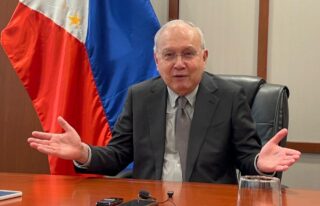Emerging markets have yet to see the worst of a global capital shakeout but the Philippines can hurdle this episode given its strong economic fundamentals, investment experts from global insurance giant Sun Life of Canada said.
Any pullback in local equities, which are relatively expensive compared to regional peers, is an opportunity to take a long-term position, Hong Kong-based Michael Manuel, managing director for Asia investments at Sun Life of Canada, said in a recent briefing.
On equities, the Philippine Stock Exchange index (PSEi) may rise by a modest 10 percent to about 6,500 this year, said Michael Gerard Enriquez, chief investment officer at Sun Life Financial Philippines. He said this would be supported by a 6- to 8-percent average growth in corporate earnings.
“The Philippines is one of the better stories in Asia but it’s expensive,” Manuel said.
As such, Manuel said price-to-earnings multiples (P/E) of Philippine stocks were not likely to rise significantly this year, as investors would not likely pay too high a price relative to projected earnings. He said the P/E ratio of Philippine equities would likely hug the long-term average of only about 15x, with the 5,500 level offering a very strong support for the PSEi.
“I’m not saying the rally will pan out but it will be a slow rise from here,” Manuel said.
The PSEi ended higher for five consecutive years beginning 2009.
Manuel said emerging markets would remain out of favor with global investors this year, as they were just beginning to catch up with the recovery in developed markets like the United States, Eurozone and Japan.
“The [Philippines] is well-positioned to take on this hiccup in emerging markets,” Manuel said, noting that the country was on a much better fundamental footing compared to the last Asian turmoil that started in 1997.
Before the Asian currency turmoil of 1997, Manuel said the Philippines was trying to fix its exchange rate at P26:$1. The country was afterward forced to devalue its currency and hike interest rates as capital flight hit the region. Today, the country is on a floating exchange rate amid a record-low interest rate regime.
Manuel said the Philippines likewise enjoyed vast foreign reserves but said the Bangko Sentral ng Pilipinas was unlikely to use this ammunition to defend the local currency to address a temporary situation.
“It will not be immune to a currency weakening in global markets but as the outflows subside, it will get back to a stronger level,” Manuel said, adding that the country’s external surplus was supported by a steady flow of overseas remittances unlike other emerging markets, which were dependent on portfolio flows.
Another big difference from 1997 is the sound footing of the Philippine banking system at present, Manuel said. Previously, he said banks were crippled by high interest rates and a large stock of nonperforming loans.
“From the perspective of emerging markets, you will see the Philippines react, but I will take that as an opportunity to buy,” Manuel said, noting that the downward pressure on asset prices would lead to the mispricing of local assets versus fundamentals and therefore a chance to build up long-term positions.


